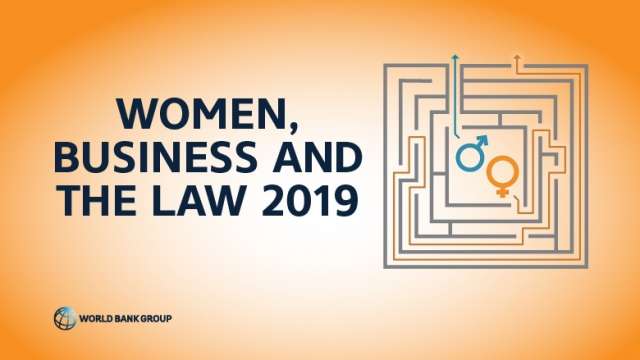
Zimbabwe’s regulatory environment for women’s economic inclusion has improved over the past two years, but Zimbabwe is missing mention among 40 countries globally that enacted 62 reforms that will help women.
Equity Axis News
However, Zimbabwe occupies the third spot in Africa’s top five performers with a score of 86,9 points in as far as female participation in economic issues and legal rights protection is concerned.
The study titled Women Business and the Law (WBL) 2020, measures 190 economies, tracking how laws affect women at different stages in their working lives and focusing on those laws applicable in the main business city.
Conducted from June 2017 to September 2019, it covers reforms in eight areas that are associated with women’s economic empowerment, precisely on mobility, workplace, salary, marriage, parenthood, entrepreneurship, assets and pension.
The best performer from Africa is Mauritius with a score of 91,9/100 followed by South Africa scoring 88,1/100. Lagging behind Zimbabwe in Africa’s top five are Cape Verde and Namibia (tie) as well as Tanzania with scores of 86,3 and 84,4 respectively.
In Sub-Saharan Africa, 11 economies implemented 16 reforms in seven areas, but the Democratic Republic of Congo introduced social insurance maternity benefits and equalised retirement ages, while in Ivory Coast, spouses now have equal rights to own and manage property.
The most recent statistics published on the Reserve Bank of Zimbabwe website makes reference to a FinScope Survey data of 2011 and 2014 which revealed that the level of access to formal financial services for women adults increased from 35% in 2011 to 68% in 2014 due to increased access to non-bank financial services, mainly mobile financial services. ‘
- Chamisa under fire over US$120K donation
- Mavhunga puts DeMbare into Chibuku quarterfinals
- Pension funds bet on Cabora Bassa oilfields
- Councils defy govt fire tender directive
Keep Reading
Major drivers to uptake of mobile money were to receive money (72%), to send money (57%) and to withdraw money (32%). The deep-dive analysis also revealed that 72% of female adults in Zimbabwe did not use insurance products at all, whether formal or informal.
In Zimbabwe, while the financial inclusion level is on the upswing, it is mostly men who are captured in the system, while women, across regions of the country, are set back by religious, cultural and educational factors, limiting their potential.
Late last year, Women Affairs, Community, Small and Medium Enterprises Development minister Sithembiso Nyoni said the government was satisfied with the impact Zimbabwe Women’s Microfinance Bank (ZWMB) has had towards increasing financial inclusion of women.
“I am satisfied with the impact of the Women’s Bank in enabling the financial inclusion of women. Due to its existence, women’s profiles in the banking sector has risen from 37% to 70%. Over the years, most women were not banking, but after the opening of the Women’s Bank the trends have significantly changed, heralding the bank’s importance and the impact it has had,” she said.
In December 2016, there were 1,46 million bank accounts and 770 000 of these were held by women. This translates to 52% of all accounts that were held by banks then. This is not too far from the structure of our population. Fast forward to December 2018 and only 26% of all the accounts held by banks are opened by women.
In the micro-finance sector, as at December 2018, active women clients constituted 40,78% of the total number of active clients compared to 32,50% as at December 2012. Total loans to women clients ($112,28m) constituted 29,01% of the total loans ($386,99m).
Key to the assessment of this matrix is the contribution of mobile money to Zimbabwe’s financial inclusion which houses about nine million people and accounting for 80% of Zimbabwe’s adult population.











